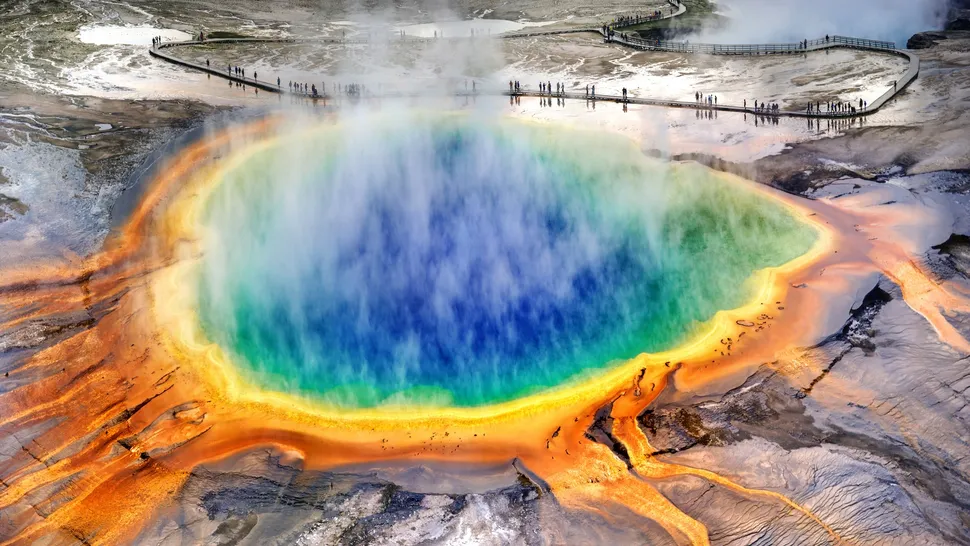We finally know where the Yellowstone volcano will erupt next
Some 640,000 years ago, the supervolcano that lies beneath Yellowstone National Park erupted, covering the continental U.S. in volcanic ash, magma, and other debris. Scientists now have research estimating when and where it could happen again.

Grand Prismatic Spring at Yellowstone National Park. A new study suggests that future eruptions at Yellowstone will likely occur in the northeastern portion of the national park. (Image credit: Ignacio Palacios via Getty Images)
New research has pinpointed where theYellowstone supervolcano will likely erupt. It won't blow today, but future eruptions will likely center on the northeastern side of the national park, the new study finds.
Not that Yellowstone is likely to still be a national park by the time it erupts. Any such eruption is expected to take place hundreds of thousands of years from now, study co-author Ninfa Bennington, a volcano seismologist at the Hawaiian Volcano Observatory, told Live Science.
The research, published Jan. 1 in the journal Nature, found that rather than being stored in one big blob under Yellowstone, melted magma lurks in four separate reservoirs within the crust of the caldera.
To the west, these reservoirs do not touch the deep mantle rocks that would otherwise heat them from below, keeping them liquid and eruptable. But to the northeast, near a landmark called Sour Creek Dome, deep rocks are heating the magma trapped in the crust. That means that while magma under the western side of Yellowstone will likely start to cool and solidify, the northeast will stay hot.
Previous studies of Yellowstone had used the passage of earthquake waves through the caldera to try to gauge where liquid magma versus solid rock sat beneath the park. But waves can change their behavior based not just on whether they're traveling through a solid or a liquid, but also on temperature. That means hot, solid rock is hard to differentiate from similarly hot liquid magma.
The new study used a method called magnetotellurics to get a better look. Earth's rotating core creates a magnetic field that surrounds the planet. Because magma contains magnetic minerals, pockets of subterranean liquid magma create their own mini-magnetic fields detectable at the surface, too. Using instruments deployed around Yellowstone, researchers mapped these mini-fields to find hidden pockets of magma.
Comments on “Will Yellowstone’s Supervolcano Erupt Again? New Research Has Answers.”